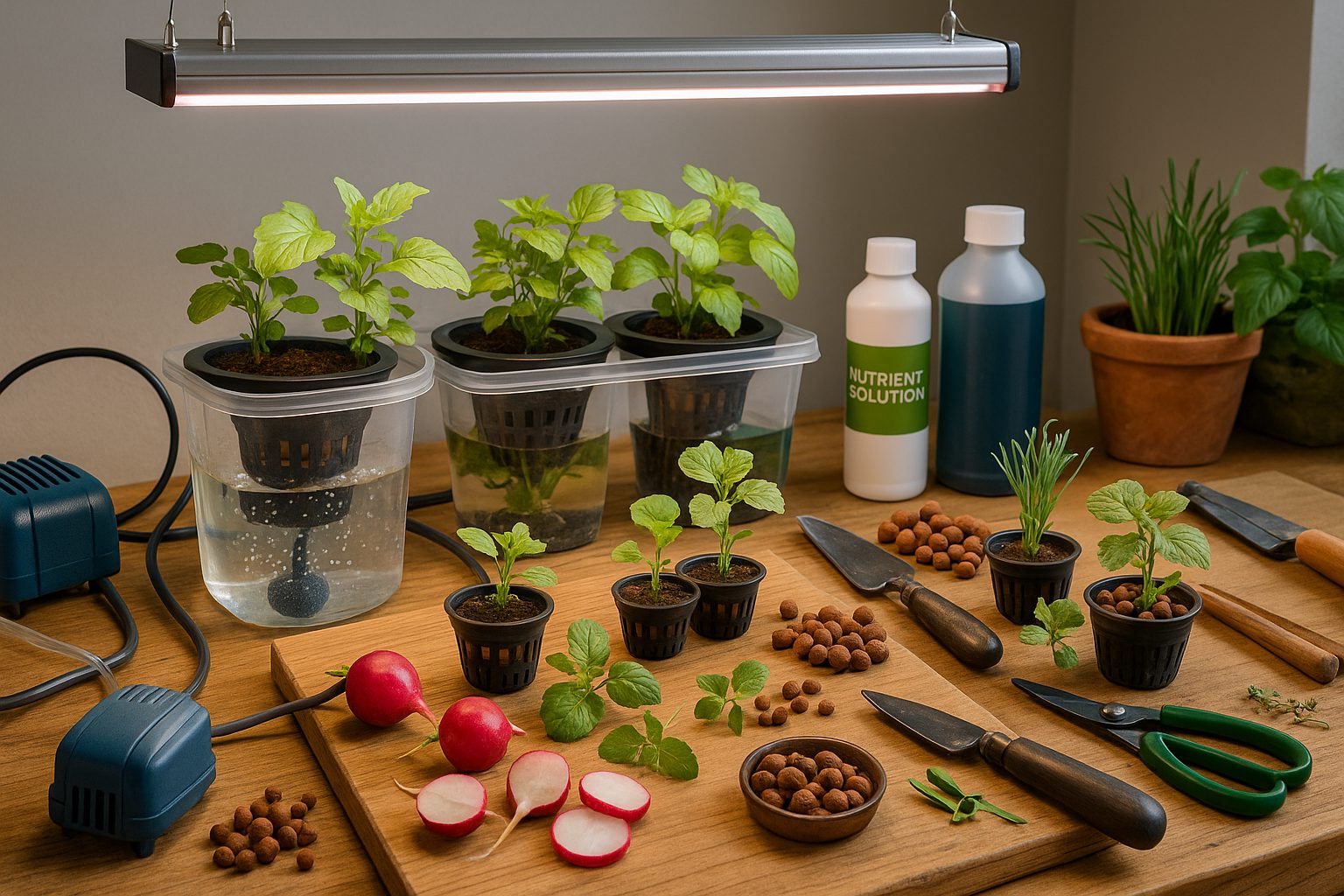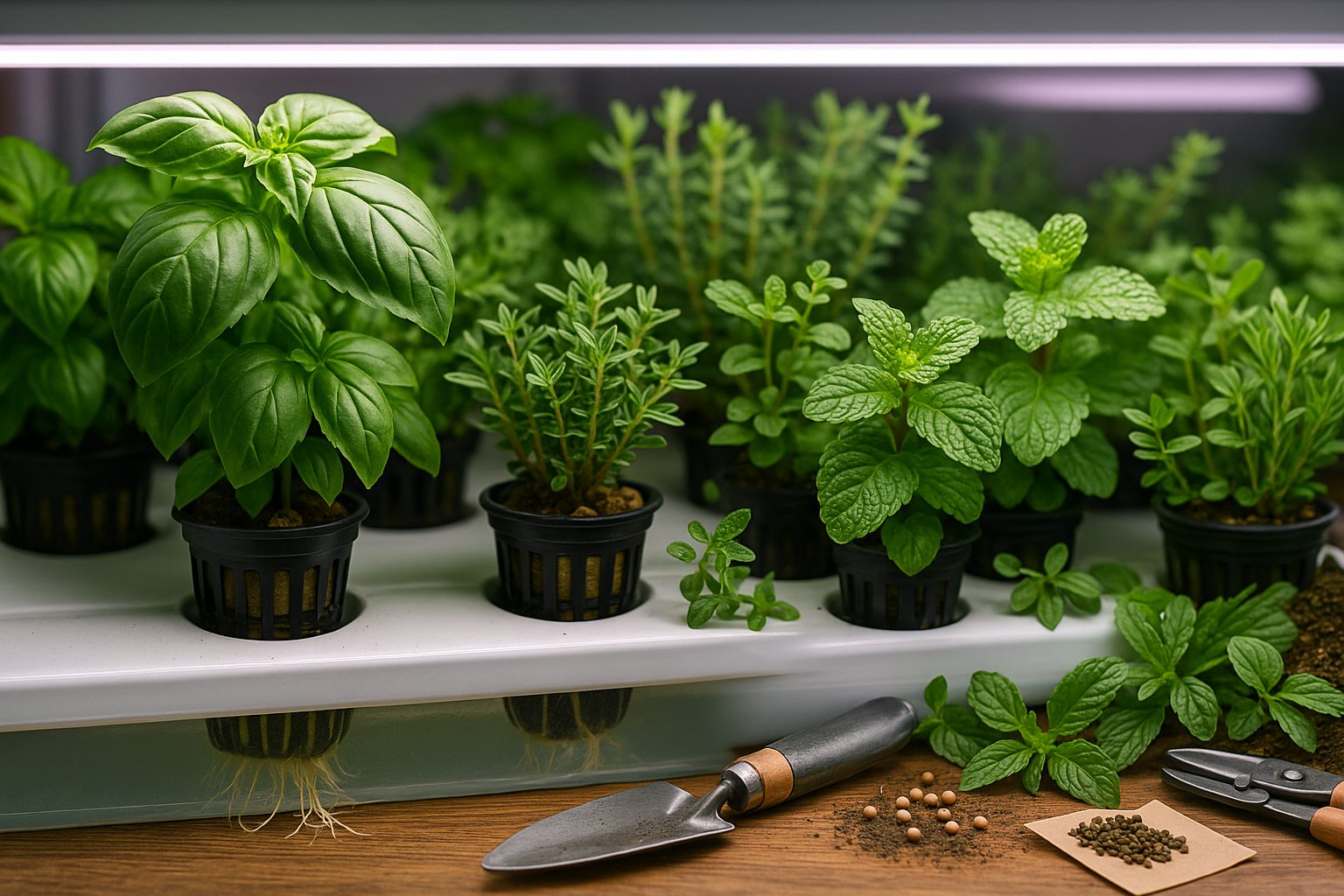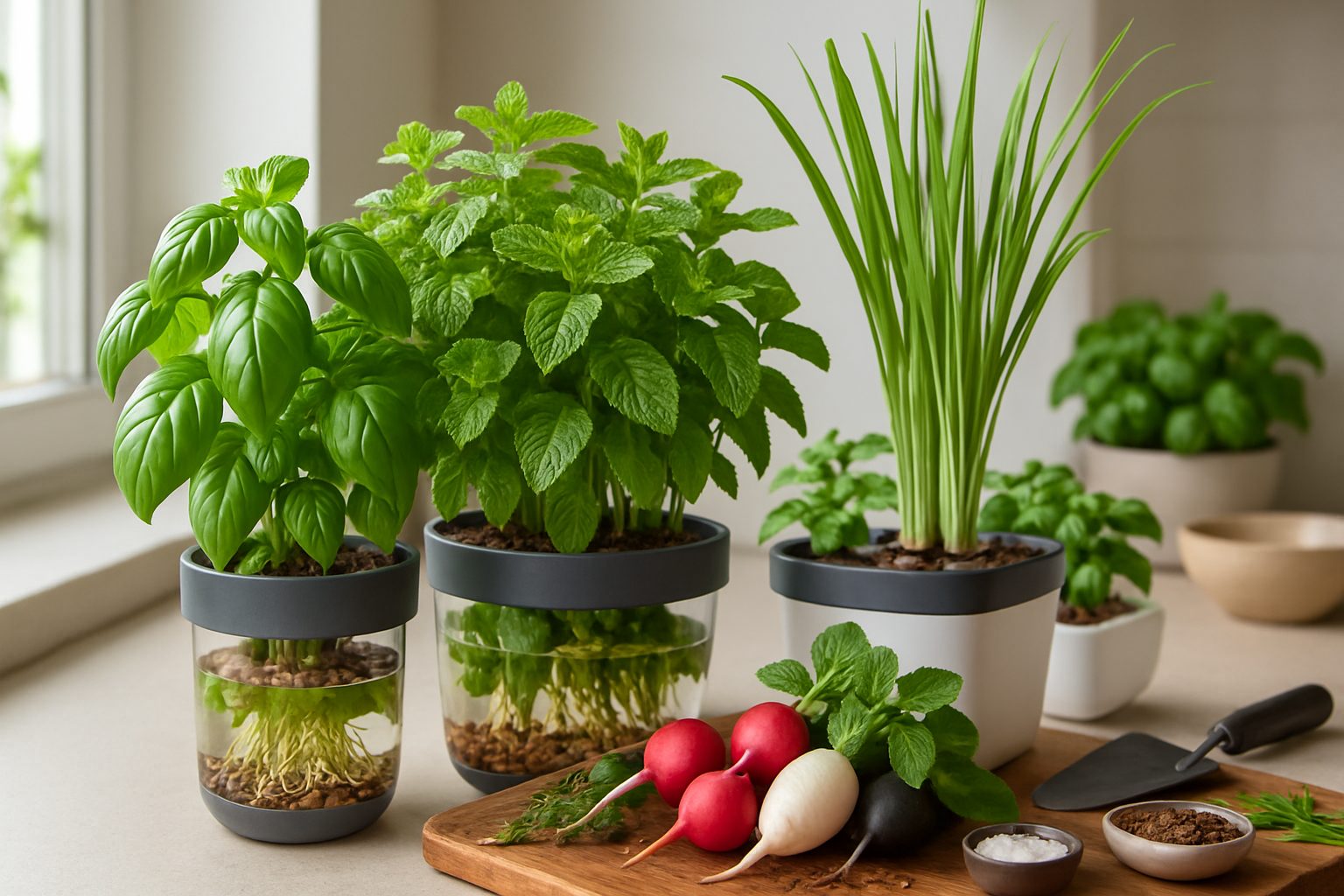Introduction
If you love the fresh, citrusy flavor of Thai curries or the refreshing aroma of herbal teas, you’re probably familiar with lemongrass. This popular culinary and aromatic herb is a staple in kitchens and gardens worldwide. But have you ever wondered if you could successfully cultivate hydroponic lemongrass? With its reputation for thriving in warm, moist conditions, lemongrass seems like a perfect fit for soilless growing methods—but is it really possible, and more importantly, practical?
In this post, we’ll cover everything you need to know about growing lemongrass hydroponically, from setting up your system to troubleshooting common issues. We’ll also weigh the pros and cons compared to traditional soil gardening and offer real-world advice for both beginners and experienced growers. Hydroponic lemongrass appeals to modern gardeners because of its year-round yield, space-saving potential, and reduced risk of soil-borne pests and diseases. Whether you’re short on outdoor space, want more control over your crops, or are just curious about innovative gardening, growing lemongrass with hydroponics might be the perfect next project for you.
Understanding Hydroponic Gardening
Hydroponic gardening is a method of growing plants without soil, using a nutrient-rich water solution to deliver everything the plant needs directly to its roots. Instead of drawing nutrients from the earth, hydroponic systems use materials like perlite, coconut coir, or simply water, allowing growers to precisely control the environment and nutrient mix.
This approach offers several benefits over traditional soil gardening. For one, it uses significantly less water—a major advantage in areas with limited resources. Plants often grow faster and yields can be higher because nutrients are more accessible and the risk of soil-borne diseases is minimized. Hydroponics also makes it possible to garden in places with poor soil or limited space, such as urban rooftops or apartments.
However, hydroponic gardening comes with its challenges. It requires an upfront investment in equipment like pumps, grow lights, and containers. Beginners may face a learning curve balancing pH and nutrients, since plants can suffer quickly if conditions become unbalanced.
Despite these hurdles, hydroponics is becoming increasingly popular for growing herbs like hydroponic lemongrass. It provides fresh, flavorful harvests year-round—even in small indoor spaces. The ability to grow herbs consistently, without worrying about pests or unpredictable weather, makes hydroponics an appealing option for everyone from home cooks to commercial growers. As more people seek local, sustainable ways to grow food, hydroponic gardening is proving to be a flexible and innovative solution.
Why Grow Lemongrass Hydroponically?
Growing hydroponic lemongrass offers several great benefits, making it an attractive choice for both home gardeners and commercial growers. First, lemongrass thrives in a hydroponic system because it receives nutrients directly from the water, which promotes faster and more consistent growth compared to soil cultivation. This direct feeding results in lush, robust stalks and a higher yield in less time.
Another major advantage is the significant reduction in pests. Since hydroponic systems use soilless media, common soil-borne insects and diseases, like root rot or fungal infestations, are much less of a concern. This often means you can avoid harsh pesticides, making your harvest cleaner and safer for cooking.
Harvesting is simpler and tidier as well—you can just snip the stalks without dealing with messy roots or soil clinging to your produce. However, starting a hydroponic lemongrass setup does require an initial investment in equipment and some time to learn system maintenance, including monitoring water pH and nutrient levels.
Unlike traditional gardening, you’ll need to regularly check pumps, reservoirs, and lighting if you’re growing indoors. While the learning curve might feel steep, these systems greatly reduce weeding, watering, and the unpredictable issues caused by poor soil conditions.
In contrast, soil-grown lemongrass can suffer from uneven nutrients, drainage problems, and greater vulnerability to weeds and pests, often leading to slower or stunted growth. With hydroponics, you have more control over your plants’ environment, resulting in healthier, faster-growing, and more flavorful lemongrass with less daily hassle.
Choosing the Right System for Lemongrass

When it comes to growing hydroponic lemongrass, choosing the right system greatly impacts plant health and yield. Lemongrass develops a robust root mass and tall, clustered stalks, so it thrives in systems that provide stability, ample root space, and consistent moisture.
The Kratky method is a simple, low-tech option ideal for beginners. It involves placing lemongrass in a container of nutrient solution without pumps or air stones. As water levels drop, the roots get oxygen. Its main advantage is simplicity and minimal equipment, making it perfect for small-scale or windowsill growing. However, mature lemongrass roots may outgrow small containers and suffer from limited oxygen if water isn’t topped up or containers are too shallow.
The Nutrient Film Technique (NFT) circulates a thin film of nutrient solution across plant roots. While NFT can support rapid growth, its shallow channels aren’t ideal for lemongrass’s thick root balls, and unanchored stalks may tip over as they grow tall and heavy. If you want to try NFT, look for wider, deeper channels and be ready to support the plants.
Deep Water Culture (DWC) suspends plants in a well-aerated nutrient solution with roots fully submerged. DWC systems work well for hydroponic lemongrass if you use strong net pots and containers deep enough for root expansion. The bubbling action ensures the roots get plenty of oxygen, which lemongrass loves. However, roots can tangle in smaller setups unless plants are spaced well.
For home growers, the best bet is usually a modified Kratky or DWC system in sturdy, food-safe buckets or tubs that are at least 3 to 5 gallons in size. Use wide net pots (3-4 inches across) to give stalks room and prevent root binding. Secure taller plants with stakes or a trellis as needed. In all cases, plan for frequent water changes, good aeration, and solid support, as hydroponic lemongrass can become top-heavy quickly. Starting small and scaling up as roots develop is a great way to learn what works best in your space.
Step-by-Step Guide: Growing Lemongrass Hydroponically

To start your hydroponic lemongrass adventure, you’ll need a few essential materials: lemongrass seeds or stalks (fresh grocery store stalks work well), a hydroponic system (such as deep water culture, Kratky, or nutrient film technique), a nutrient solution balanced for herbs, grow mediums like hydroton or rockwool, net pots, an air pump (if using DWC), and access to grow lights if natural sunlight isn’t available.
Most gardeners find starting from stalks easier than seeds. Simply place fresh, unblemished stalks (about 6 inches long) in a glass of water, making sure the bottom inch is submerged. Change the water every other day and position the glass in bright, indirect light. In about a week, roots should begin to form at the base. Once roots reach 2–3 inches long, carefully transplant the rooted stalks into your chosen grow medium and place them in net pots above your nutrient solution.
If you prefer to start from seeds, soak lemongrass seeds overnight in water, then plant them in moist rockwool cubes. Keep the cubes warm and well-lit to speed up germination, which can take up to three weeks. After the seedlings develop several inches of growth with strong roots, move them into your hydroponic setup.
Regardless of how you start, fill your reservoir with a hydroponic nutrient mix designed for leafy greens—lemongrass prefers nitrogen-rich blends. Regularly check the pH (aim for 6.0–6.5) and top up with fresh water weekly to maintain a stable environment. Lemongrass thrives with at least 12–16 hours of bright light daily, so supplement with LED grow lights if you’re growing indoors or during the winter months. With consistent care—clean water, sufficient nutrients, and ample light—your hydroponic lemongrass will grow vigorously, providing fragrant stalks for culinary use all year long.
Troubleshooting Common Issues
Growing hydroponic lemongrass can be highly rewarding, but some challenges are common—especially if you’re new to the process. One frequent problem is root rot, usually caused by overly wet conditions or poor oxygenation in the water. You’ll know root rot is setting in when roots turn brown and slimy instead of crisp and white. To prevent this, keep water temperatures cool (ideally between 65–75°F), ensure good aeration using air stones, and never let debris accumulate in the reservoir.
Another issue to watch for is nutrient deficiencies, often indicated by yellowing leaves or stunted growth. Hydroponic lemongrass thrives with a balanced mix of essential nutrients—most notably nitrogen, potassium, and magnesium. If you notice yellow or pale green leaves, adjust your nutrient solution and monitor pH levels closely, as lemongrass prefers a pH of 5.5–6.5.
Pests are less common in hydroponic systems, but aphids or spider mites can occasionally hitch a ride indoors. Inspect your plants regularly and treat any infestations promptly with neem oil or insecticidal soap.
Healthy lemongrass will have vibrant green, upright stalks and vigorous root growth, while struggling plants might droop, show spots, or develop limp stems. By staying alert to these signs and addressing problems quickly, you can ensure your hydroponic lemongrass thrives year-round.
Harvesting and Using Hydroponic Lemongrass
Harvesting hydroponic lemongrass at the right time is key to enjoying its fragrant citrus flavor and ensuring strong regrowth. Ideally, cut lemongrass stems when they reach about 12–18 inches tall and the bulbs at the base swell slightly—this indicates they’re mature and flavorful. Use clean, sharp scissors or a garden knife to snip stems close to the base, taking care not to damage the core clusters. Removing some, but not all, stems encourages new growth, allowing you to stagger harvests for a continuous supply.
After harvesting, rinse the stalks thoroughly and trim off the tough outer leaves to reveal the tender heart; this pale section holds the most flavor for cooking. For storage, wrap cleaned stalks in a damp paper towel inside an airtight bag and keep them in the fridge, where they’ll stay fresh for about two weeks. Lemongrass also freezes well—slice or chop it first for easier use in future recipes.
When you’re ready to cook, bruise the stalk with the flat side of a knife to release its essential oils, then add it to soups, curries, teas, or stir-fries. Hydroponic setups make it easy to maintain and regrow lemongrass: simply leave the rooted base submerged in your system, and new shoots will emerge within weeks. Trim regularly and refresh nutrient solutions as needed to keep your plants healthy and productive, turning your kitchen into an endless source of zesty, aromatic hydroponic lemongrass.
Conclusion & Final Thoughts
Hydroponic lemongrass offers a fresh, flavorful harvest year-round, free from soil-borne pests, with less mess and more consistent growth. Growing lemongrass hydroponically allows you to control nutrients, optimize light exposure, and enjoy faster, healthier plants compared to traditional soil gardening. Plus, the clean, aromatic stalks are perfect for teas, cooking, and natural remedies.
If you’re looking for a fun and rewarding way to expand your indoor garden, hydroponic lemongrass is an excellent place to start—no green thumb required! Gather a basic hydroponic setup and give it a try; you might be surprised at how quickly you’ll be harvesting your own supply.
Ready to keep growing? Consider branching out to other hydroponic herbs like basil, mint, or cilantro, each offering unique flavors and gardening benefits for your kitchen. Take this step and join the rapidly growing community of home hydroponic gardeners today.
